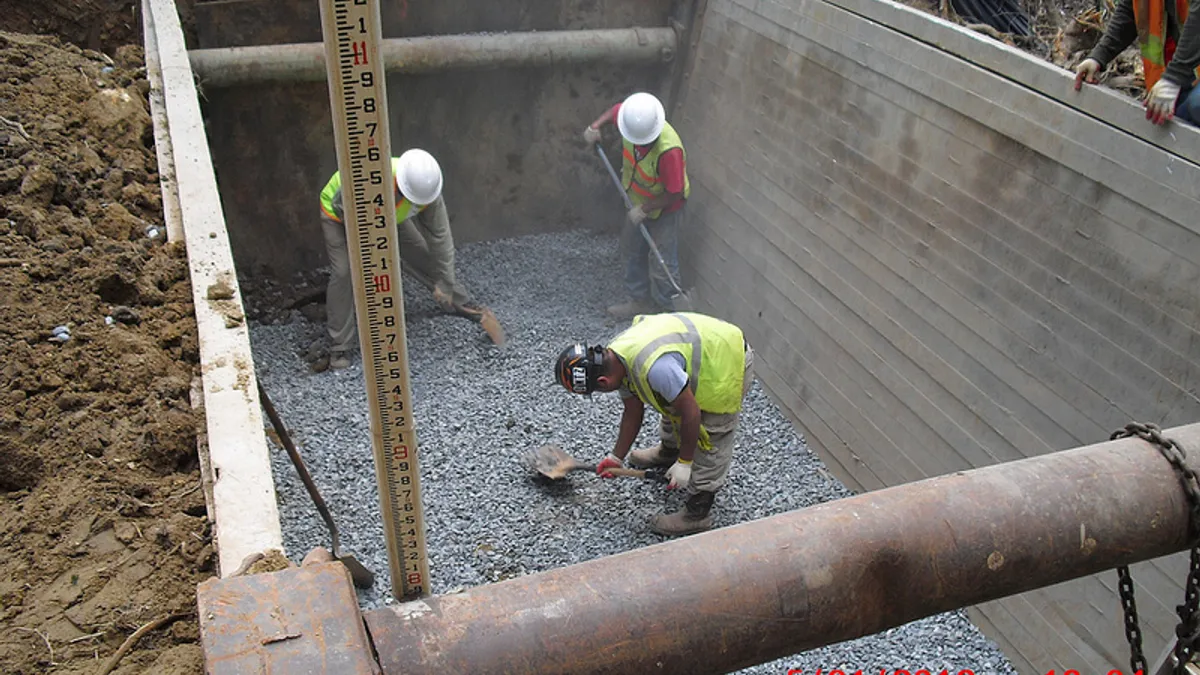Trenching is one of the most dangerous jobs in the construction industry. Just one cubic yard of dirt can weigh up to 3,000 pounds — enough to crush anyone unlucky enough to be trapped underneath when the trench walls give out.
Fatal trenching accidents more than doubled last year. The Occupational Safety and Health Administration says such incidents are preventable if only contractors would comply with the agency's safety standards and train their employees on safe trench operating procedures.
Many law enforcement agencies have proven willing to prosecute anyone who has a hand in the death or injuries of workers caught in trench collapses.
One of the most high-profile trench-collapse cases on record not only led to the conviction of a general contractor. It also reportedly influenced Manhattan District Attorney Cyrus Vance's decision to form a task force to investigate and prosecute safety violations and construction fraud in New York City.
In April 2015, a trench collapsed at one of general contractor Harco Construction's project sites in Manhattan, killing 22-year-old Carlos Moncayo. City prosecutors convicted the company of criminally negligent homicide and manslaughter, but Harco ended up paying a relatively small fine of $10,000 after snubbing the judge's first order to pay for a series of public safety ads.
Moncayo worked for Harco subcontractor Sky Materials Corporation, which pleaded guilty to manslaughter. The court also ordered Sky to pay a $10,000 fine and sentenced job site foreman Wilmer Cueva to one to three years in prison. In addition, OSHA levied $100,000 in penalties against Sky. Harco supervisor Alfonso Prestia got a much better deal than Cueva when a judge sentenced him to community service and probation.
In 2016, two Boston workers were killed in a trench collapse, resulting in criminal charges against contractor Atlantic Drain Service Co. and its owner. That case is making its way through the Suffolk County, MA, court system, but so far OSHA has cited Atlantic with 18 safety violations and fined the company almost $1.5 million.
The case also drove Boston Mayor Marty Walsh to push through legislation that now requires contractors to disclose their safety histories when applying for any building permit in the city. After the accident, it was revealed that Atlantic had a string of prior safety violations and unpaid OSHA fines.
Keeping an eye out
With such irrefutable evidence that trenches are dangerous places where employees must be protected, why were there more than 20 trench deaths in 2016 alone?
According to William Motherway, president of New York operations at insurance and risk management firm Conner Strong & Buckelew, it boils down to three things: inadequately trained workers; the inclination to cut corners so that the job is finished on time and on budget; and, in some cases, a careless safety culture.
Another factor, is that supervisor and manager bonuses often depend on hitting schedule and cost goals, so some might be willing to overlook safety procedures or forgo costs related to compliance with OSHA and other guidelines to see the project completed quickly.
"It costs more to do it right," he said.
Motherway said companies should use OSHA guidelines as a minimum safety standard. They should also give employees the authority to stop work if they see hazardous conditions. Some companies are concerned about the financial ramifications of shutting down a large project. However, Motherway said, the consequences of not doing so could be much worse — a public relations disaster, criminal prosecution, an extended closure or loss of life.
Charlie Crofford, safety manager for C1S Group in Dallas, has a simple philosophy about trenching and any other aspect of construction work on his company's jobs. That is, it's his company's responsibility as the general contractor to make sure subcontractors and anyone else who sets foot on site follow the rules.
"We require them to submit their [safety] programs to us," he said. "If their program is not as stringent as ours, they have to follow ours." Crofford has encountered resistance from some subcontractors on that point. "If I do get [pushback]," he said, "that's the last time they work with us." And if a company poses a danger to others on the job, Crofford said, "we'll replace them on the spot."
Boots on the ground
Job site safety is more than just a written policy, Crofford said. It's also about having a physical presence on the job, and that means adequate supervision, especially for workers engaged in high-risk operations like trenching. Crofford makes sure to be on site during any hazardous operations like excavation or trenching because OSHA doesn't typically require that there be someone dedicated to watching over workers engaged in these activities.
But he's not excusing companies that don't allocate enough supervision. "I walk the jobs personally," he said. "If you have the commitment [to safety], you're going to [need] have someone there to watch [the work]."
With or without supervision, trench safety relies on common-sense practices. Crofford said companies involved in trenching operations should ensure that their workers know the rules of trenching, are able to identify trench hazards and have escape routes out of the trench in case of an emergency.
"You don't get second chances," Crofford said. "You have to take it seriously."





















